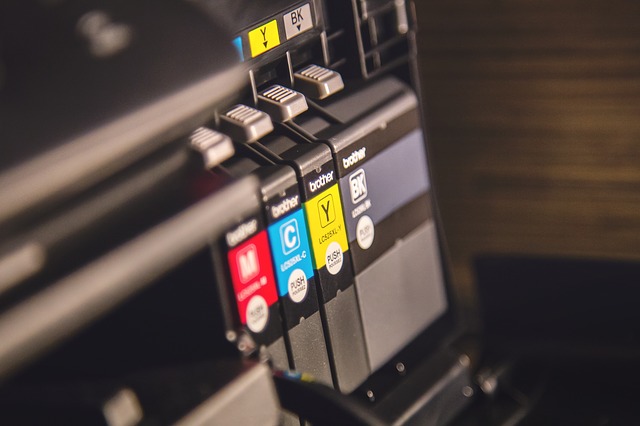Are you looking to buy a new inkjet cartridge for your printer? There are no one-size-fits-all cartridges in the market.
You need to pick an inkjet cartridge that uniquely suits your budget and specific requirements.
1. Consider the daily or monthly ‘print volume’
Most ink sellers, whether they are offering original, compatible or recycled cartridges, put ‘page yield’ labels on their cartridges.
This label indicates an approximate number of pages that you can actually print before a cartridge will run dry of ink.
- A standard cartridge is recommended in case you print occasionally. Such ink cartridges are often purchased for light duty in homes and micro offices.
- Buy a high yield or XL inkjet cartridge if you print more. Such ink cartridges can help you save up to 50 percent in per page printing cost in comparison to standard cartridges.
Do keep in mind that printer cartridge manufacturers consider a page coverage area of 5 percent when calculating page yields.
Expect a lesser than expected page yield if you print documents in which the ink covers more than 5 percent of the area of the page.
2. Buy OEM (Original Equipment Manufacturer) cartridge when you must

OEM inks are made by the printer companies. These are the highest quality inks as manufacturers know more about their devices than anyone else.
OEM Inkjet cartridges have the least chance of failure and deliver consistent page yields.
No wonder, OEM is also the most expensive inkjet printer cartridge replacement option.
In some cases, original brand ink cartridges may even be more expensive than the printer!
Therefore, buying branded cartridges is recommended only if your printer is still under warranty.
In that case, it’s advisable to use the manufacturer’s ink otherwise warranty may become void.
You can purchase OEM inkjet cartridges from an authorized retailer in your locality or place an order online.
- Visit the official website of the printer manufacturer; most companies have dedicated sections to help you find the right ink cartridge for a printer.
- Enter the printer name/model and existing cartridge number.
- The website will direct you to the appropriate product landing page to complete the buying process.
In some cases, you may also avail a discount on OEM inks by purchasing them from credible third party online retailers.
3. Should you buy recycled or refurbished Inkjet cartridges?
Yes, why not!
Several companies such as 4inkjets, Inkjetsclub, Inkfactory, and Kodak carefully recycle and refill OEM inkjet printer cartridges.
These ink cartridges are significantly cheaper.
You can save up to 80 percent in ink cartridge replacement costs by purchasing recycled cartridges.
Remember that the word ‘recycle’ does not imply garbage.
Empty OEM inkjet cartridges compatible with different printer models are carefully engineered and deliver satisfactory performance.
Processing units of the OEM or a different firm open empty cartridges and refill them, replacing any faulty or damaged components.
Post refill, a cartridge is examined for quality.
These inkjet cartridges are sold with labels such as recycled, refurbished, remanufactured, etc. and may come with certain guarantees or warranties.
When you buy recycled cartridges, you’re also contributing to the environment by reducing e-waste that would have otherwise ended up in landfills.
4. Should you consider a generic Inkjet cartridge?
A large number of people blissfully ignore dire warnings from printer manufactures and buy generic inkjet cartridges to save on printer ink costs.
After all, printer manufacturers have been known to aggressively pursue the strategy of nudging consumers towards the high frequency of ink cartridge purchases.
So, there is no harm in considering generic/compatible inkjet cartridges.
However, you need to choose the right seller:
- Look for branding: Do not buy generic cartridges from anonymous sources. Generic cartridge manufacturers that brand their products are essentially willing to take responsibility for the quality of their products.
- Accreditations: Does the seller have the right accreditations? An ISO 9001 certification, for instance, implies that the seller isn’t just worried about the regulatory requirements of where they operate but also care about the customers.
- Guarantees: Does the seller provide any guarantee on inkjet cartridges on offer? Manufacturers who are simply in it for some quick money will never offer any warranty or guarantee. They may not even have their names or logos on the cartridges they have on sale.
- Page Yield: Does the cartridge clearly mention the expected page yield? If not, the seller almost certainly has something to hide. Consider it a red flag.
5. Bulk orders can help cut expenses
Regardless of whether you order OEM or compatible inkjet printer cartridges, one sure-fire way to cut costs is to order in bulk.
You can, for instance, buy twin or multi-packs to save up to 20 percent by purchasing a pack of 2 or 4 inkjet cartridges instead of individual ink packs.
Fewer online orders imply that you save on shipping costs. Some suppliers may also discount bulk orders.
Each time you order OEM or compatible/generic cartridge, it is delivered at your doorstep in solid packaging to prevent in-transit damage.
Most packaging materials are non-biodegradable.
When you order in bulk, you also help sellers cut down on packaging material requirements.
Thus, you indirectly help the environment when you order in bulk.
6. Avoidable common mistakes
Learn a teensy bit more about your printer.
Avoid some of the most common mistakes people make when hunting for an inkjet cartridge:
- Not reading through the printer manual; even if you’ve lost the hard copy, you can find one on the Internet.
- Misreading the printer model or inkjet cartridge number.
- Buying a cheaper cartridge without further considerations.
- Trying to refill ink cartridge at home in a bid to save some money without relevant experience.
- Getting the wrong ink; pigment-based inks do not involve long drying time as compared to dye-based inks.
- Paying more; buying an overly expensive cartridge does not guarantee its performance
Final words
Whether you purchase OEM, compatible or recycled inkjet cartridges, remember to do your homework and avoid the common mistakes outlined above.
Also, store all spare cartridges inside their closed package, away from the sunlight, preferably in an area having stable heat.

My name is George Mendelson. I am the PR Media Manager at InkjetsClub a nationwide leading ink and toner retailer. One of my passions is educating and helping people through all the issues related to Printers, Ink Cartridges and Toners. Follow us on Twitter or Facebook to get more updates.
